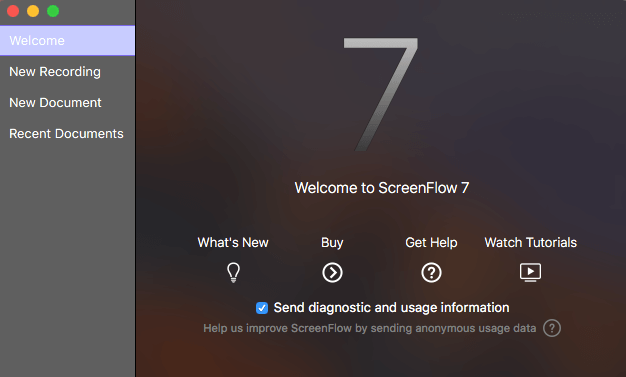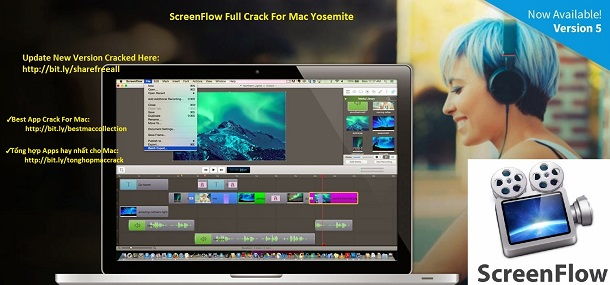
- #Where are my recorded files using screenflow for mac how to
- #Where are my recorded files using screenflow for mac for mac os x
- #Where are my recorded files using screenflow for mac software
- #Where are my recorded files using screenflow for mac trial
- #Where are my recorded files using screenflow for mac license
SCREENFLOW file is always to create it once more. SCREENFLOW file may be deleted.īy no means should you think that the only way to recover a.
#Where are my recorded files using screenflow for mac software
Sometimes while working with a computer, laptop or other stationary or mobile devices, you may encounter various bugs, freezes, hardware or software failures, even in spite of regular updates and junk cleaning. SCC video file used for saving and resuming screencasting projects.
#Where are my recorded files using screenflow for mac for mac os x
Screen recording project created by ScreenFlow, a desktop screencasting application for Mac OS X stores a bundle of project files and includes the captured. Like I said, it may not be the best approach but it's the one I stumbled into and it worked for me (as seen here). FLV file you've been making, and to add at least 20 pixels to the height if you're going to use their control bar (which is the default).

Remember to set the width and height to the video size of the.
#Where are my recorded files using screenflow for mac how to
Longtail provides very clear instructions for how to use their tool.
#Where are my recorded files using screenflow for mac license
But I was in a hurry and JW FLV Media Player did everything I wanted (at a cost-open source and free for non commercial but €39 for a commercial license on one web domain) It's also not very difficult to find a lot of FLV players, or even to roll your own. Many users can play the FLV files directly, but they won't look very elegant. FLV file suitable for any flash player.Ħ) Create web page and embed on web page with JW FLV Media Player There are other FLV metadata injector source tools you can use and build, but this was the quickest way there that I found. To perform this step I downloaded the free windows tool "FLV MetaData Injector" and run the executable ("flvmdi.exe") from a parallels session. The file that results from ffmpegX does not have the metadata (especially for height and width) that the next step (JW Player) is going to need to display the video correctly (without the right metadata it will try to change the video to fit standard sizes). play around with the video bitrate field until you get a value that ffmpegX shows up as green-sometimes it is slow to show this so you need to switch on different tabs to force it to update-in my case I ended up with video bitrate 1400ĥ) AddFLV metadata with FLV MetaData Injector.framerate 15 (which is half the framerate 30 used in steps up to this point).From options selected "High Quality" and "Two-pass encoding".You can build all those video convert tools from the open source, but for me ffmpegX was worth it because, even though it was an effort to install, it was a whole lot less effort than installing all tools it's made from.įrom ffmpegX open the Stomped file and output to FLV format. mov files.įor Stomp I used these settings always chooseing best quality versus lowest compression (which actually resulted in a larger file that what I started with, but I think that is taken care of later):įfmpegX is a minimal wrapper around a lot of open-source video software. For my purposes I didn't actually use it to compress so much as to reorder the audio/video so that the next phase (ffmpegX) doesn't have the jerky problems it gets from the way the Screenflow outputs audio in. change vide settings to optimize for streaming.scale 74% to 576x702 (because 702 is short enough to fit on most computers yet tall enough to represent my screencast well, and also because 576 is divisible by 16-which turns out later to be important-and 702 is even if these requirements had not been met I would have used a tiny bit of letterboxing to make sure they were matched).Selecting Screenflow Export I chose these settings: Editted the result, and did all the other demo stuff. The browser window happened to be set at 778x950 (widthxheight).

I recorded the interraction of my browser along with audio. How I turned Screenflow into embedded Flash vide on our own web site (as seen here):

Maybe there's a better approach, but these are the steps I took: flv file, that I can embed on our web site.

#Where are my recorded files using screenflow for mac trial
(See the too-small youtube version here).Īfter lots of trial and error, I did finally get to an acceptable embedded flash video. YouTube accepted the video, and converted it smoothly, but the final results was squashed down 360 pixels tall, which is too small to effectively show our demo. The first approach was to upload it to YouTube. So my problem became, how to turn the Screenflow. Quick research showed that close to 100% of my audience could play flash videos. mov file that had a couple of problems 1) it was too darn big, and 2) I could find lots of browser clients that would not play that. Over the weekend I did my first screencast demo for our YiqYaq web-radio site, using Screenflow on Mac OS X.


 0 kommentar(er)
0 kommentar(er)
